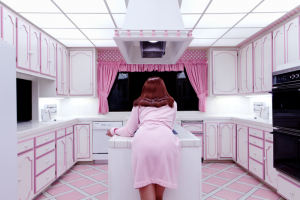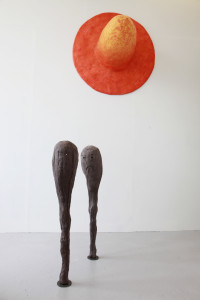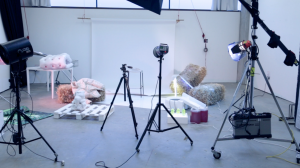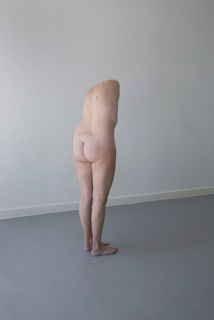
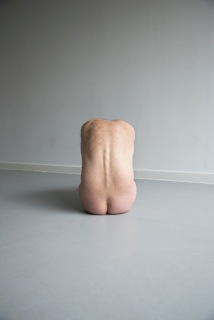
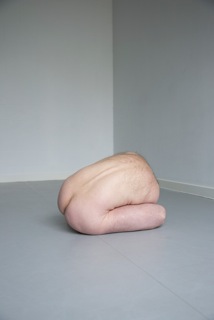
Ahead of the Catlin Guide 2014 Launch at London Art fair in January FAD will be featuring some of the artists from the guide here we have : Chloe Rosser
What made you want to be an artist?
It was the way working in the darkroom made me feel. When I was initially taking photographs, I shot all my images on my Pentax MX and developed them by hand. I would spend all my free time printing because it gave me such a feeling of purpose. I fell in love with the process of creation and the physicality of the images I was making.
How has your practice changed over the course?
I have explored a whole range of subjects through photography, but somehow it always links back to people and the human body. I use to take a lot more portraits and write descriptive narratives to lead you through a series of images. I also became obsessed with darkroom techniques and spent a lot of time solarizing my photos and messing around with the chemicals. The human body has become more and more prominent in my work and lead me to create my most recent series, Form. Here I photograph with the body in contorted poses that look almost inhuman. I worked with my life models to see what their individual bodies could do and how far they could push themselves. All the poses are real, which was really important to me, as were the normal, natural bodies I chose to photograph. I think that over time, my work has become a more in depth study into the human body and how we feel towards it.
How does it feel to be in the Catlin Guide?
It’s wonderful! I feel really lucky to have my work included and I can’t wait to see it in print!
What is your studio routine?
When working with my life models on my recent body of work, Form, I would arrive early to make sure the room was clear and warm. When my life model arrived we would have a chat about the kind of poses I wanted that day over a cup of tea and a huge array of test shots. Then I would keep my fingers crossed and hope that it wouldn’t become too sunny as I wanted diffused natural light. The poses themselves are very hard to hold for a long period of time and they require a lot of curling so my models could only hold the poses for a couple of minutes at a time. I would shoot for an hour or two, in which time each pose would be arranged within the space and adjusted to suit the particular model.
Where do you see yourself in five years time?
Ideally, I want to be photographing and creating my own artwork whilst also working in a photography gallery. I grew up in London and I definitely want to stay here for the time being – there is just so much going on. Each area in London is like a completely different town so it’s hard to get bored.
What artists inspire you?
Lots of people do! Berlinde De Bruyckere is a big person for me. Her wax sculptures of the human form are so emotive with their fleshy colours and imperfect shapes and edges. A particular piece of hers really affects me. It is a body curled around a white cushion. The form clings to the cushion and is becoming enveloped in it so that only its torso and one leg remains visible. The pose is so human and fetal; it clutches at the cushion, seeking its comfort and reassurance. To name a few more, Asger Carlsen’s photoshop sculptures made from photographs of the body amaze me; especially his work, Hester. Carrie Levy’s Domestic Stages have such beautiful forms and colours.
How does it feel to be leaving University?
It was scary at first, especially because you don’t have guidance and advice from your tutors anymore. Before I left I didn’t know how I would make the transition but it has just happened naturally and now I’m interning at a photography gallery and working on my own art. I can’t believe how quickly the last six months have gone since I left University!
What are the best shows you’ve seen in the past year?
I really loved the exhibition, Home Truths, at The Photographer’s Gallery. I went to Paris Photo this year, which was fantastic, but I managed to pop in and see Ryan McGinley’s show, Body Loud at the Galerie Perrotin, Paris. I’m a big fan of his and it definitely lived up to my expectations. Shunga, at The British Museum is also a great one to see.
What makes a great artist?
That’s something that I’m still figuring out.
How do you negotiate the pressure to be a commercially viable artist?
It’s tricky – I try not to think too much about how the work is going to be received in a commercial light. I focus on what the work means to me otherwise I think its potency will just get lost.
If you were given a big commission what work would you want to realize?
I would want to take my human forms and put many of them together to see how they react to each other. I also love the idea of creating an installation of my forms. I would have to find people who would be comfortable holding the poses for longer then when I photograph them, but it could be done so that the public can only see the forms for a few minutes at a time.
What are the best galleries in the UK?
The Welcome Collection in London is a favourite of mine. I’m really interested in science as well as art and their exhibitions are always a fantastic meeting of the two. They also have a great permanent collection of interesting objects and art to do with topics like medical history, sex and memento mori.
The Catlin Guide will be available at the ArtCatlin stand P25 at the London Art Fair, 15th -19th January, for more information www.artcatlin.com
